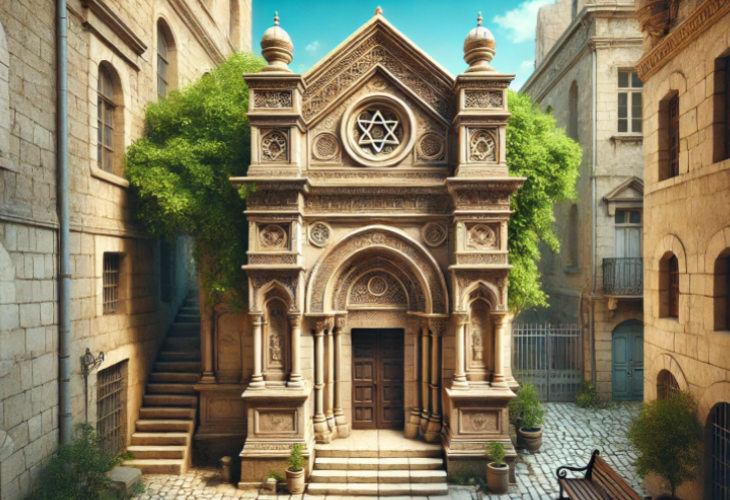our previous article<\/a>, synagogues have been a part of Israel's landscape since time immemorial, possibly even dating back to when Moshe Rabbeinu instituted Torah reading on Shabbat, as various sources attest.<\/p>But can remnants of synagogues from the First Temple period be identified? This task is challenging, as later synagogues are more easily recognized by familiar patterns—like the location of the bimah, the Ark niche, and so on. However, during the First Temple period, these patterns were possibly not yet established. For instance, the bimah, as a raised platform where the Torah scrolls are placed, might not have been a practice; perhaps the scrolls were smaller, held on the lap, or placed on a wooden table.<\/p>
Regarding synagogues from the Second Temple period, researcher D. Amit proposed an idea to resolve some dating conflicts. We know of several synagogue remnants from this period, but dating efforts sometimes reveal significant discrepancies. Finding coins beneath a synagogue’s stones bearing Emperor Nero's image suggests the synagogue was built post-Nero. Yet, other indicators might suggest otherwise. How can this be?<\/p>
Amit references Talmudic texts indicating it was common practice to use stones and beams from old synagogues to build new ones, as they were already sanctified spaces, a revered practice. This is reflected in the Talmud Yerushalmi: "The people of Beit She'an asked Rabbi, about using stones from one synagogue to build another," and other similar examples. Not just the stones were considered sacred, but the location too, hence the insistence on rebuilding at the same site using original materials. Moreover, it was forbidden to demolish a synagogue or its parts, as the verse states: "Their altars you shall break...; do not do so to Hashem." Thus, even a quarter of a wall should not be dismantled like any regular building, but instead should be incorporated into the new structure. This can cause confusion in identification; a wall might appear to be from Nero’s era, yet the site could be much older and always used as a synagogue.<\/p>
We’ll conclude this section with a look at synagogues in Jerusalem during the Temple days. Contrary to some scholarly perceptions, synagogues did not replace the Temple. While sacrifices were offered in the Temple, Jews always prayed and read Torah. Moreover, individuals who were ritually impure could not ascend to the Temple but could enter a synagogue. The sages depict a synagogue on the Temple Mount itself (Yoma 68b and Rashi). According to R. D.Z. Hoffmann, this synagogue was in the Chamber of Hewn Stone, where the Sanhedrin convened. The chamber, partly sanctified and part secular, permitted gathering and prayer in the secular part.<\/p>
The Talmud tells of nearly 400 synagogues in Jerusalem, needed primarily during pilgrimage festivals when millions arrived, as described by both the sages and Yosef ben Matityahu. They surely prayed in synagogues or halls converted into synagogues. Josephus does mention synagogues belonging to various communities in Jerusalem, such as those from Alexandria, Cyrene, Cilicia, Elam, and Asia. Pilgrims continued praying in their native custom and style. Already in Second Temple times, there were synagogues for different communities, which wasn’t divisive, but rather an expression of respect for each community’s tradition and heritage. It is noted that even freed Canaanite slaves had a synagogue, forming their own "community."<\/p>
In 1913, remains of a synagogue were found in ancient Jerusalem, bearing an inscription: "Theodotus, synagogue leader, son of a synagogue leader, grandson of a synagogue leader... founded by his ancestors and Simeonides." This inscription provides insight into a synagogue in Jerusalem during the Temple era, indicating its governance was hereditary.<\/p>

